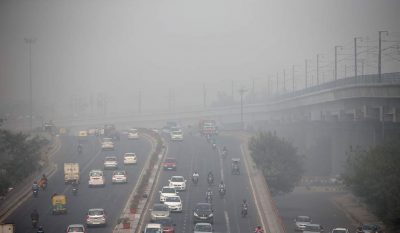National Clean Air Programme 01/05/2019 – Posted in: Daily News
National Clean Air Programme
For: Preliminary
Topics covered: National Clean Air Programme Committee, Committee members, Objectives, AQI, CPCB
News Flash
The Union Environment Ministry has constituted a committee to implement the National Clean Air Programme (NCAP), which aims to reduce particulate matter (PM) pollution by 20%-30% in at least 102 cities by 2024.
Constitution of the Committee
The committee will be chaired by the Secretary, Union Environment Ministry and has among its members the Joint Secretary (Thermal), Ministry of Power; Director-General, The Energy Resources Institute (TERI), the Delhi based think-tank; and Professor Sachidananda Tripathi, Indian Institute of Technology-Kanpur (IIT-K).
National Clean Air Programme
The NCAP unveiled in January is envisaged as a scheme to provide the States and the Centre with a framework to combat air pollution. The NCAP is envisioned as a five-year action plan with 2019 as the first year. There would be a review every five years. States in which the cities are located are expected to produce plans that include increasing the number of monitoring stations, providing technology support, conducting source apportionment studies, and strengthening enforcement. For achieving the NCAP targets, the cities would be expected to calculate the reduction in pollution, keeping 2017’s average annual PM levels as the base year.
The NCAP requires cities to implement specific measures such as “ensuring roads are pothole-free to improve traffic flow and thereby reduce dust” (within 60 days) or “ensuring strict action against unauthorised brick kilns” (within 30 days).
WHO findings
The World Health Organisation’s (WHO) database on air pollution over the years has listed Tier I and Tier II Indian cities as some of the most polluted places in the world. In 2018, 14 of the world’s 15 most polluted cities were in India.
Air Quality Index
An air quality index is used by government agencies to communicate to the public how polluted the air currently is or how polluted it is forecast to become. Different countries have their own air quality indexes. The AQI is most commonly used to describe ground-level ozone levels.
Five pollutants that pose a threat to human health:
- Ground-level Ozone or O3
- Particulate Matter (soot and dust) or PM
- Carbon Monoxide or CO
- Sulphur Dioxide or SO2 and
- Nitrogen Dioxide or NO2
Central Pollution Control Board
The CPCB, statutory organisation, was constituted in September, 1974 under the Water (Prevention and Control of Pollution) Act, 1974. Further, CPCB was entrusted with the powers and functions under the Air (Prevention and Control of Pollution) Act, 1981.
It serves as a field formation and also provides technical services to the Ministry of Environment and Forests of the provisions of the Environment (Protection) Act, 1986. Principal Functions of the CPCB, as spelt out in the Water (Prevention and Control of Pollution) Act, 1974, and the Air (Prevention and Control of Pollution) Act, 1981, (i) to promote cleanliness of streams and wells in different areas of the States by prevention, control and abatement of water pollution, and (ii) to improve the quality of air and to prevent, control or abate air pollution in the country.
Air Quality Monitoring is an important part of the air quality management. The National Air Monitoring Programme (NAMP) has been established with objectives to determine the present air quality status and trends and to control and regulate pollution from industries and other source to meet the air quality standards. It also provides background air quality data needed for industrial siting and towns planning.
Source: The Hindu
You can follow us on LinkedIn and for more updates related to UPSC IAS Preparation, Like our Facebook Page and subscribe our Diligent IAS Youtube Channel


